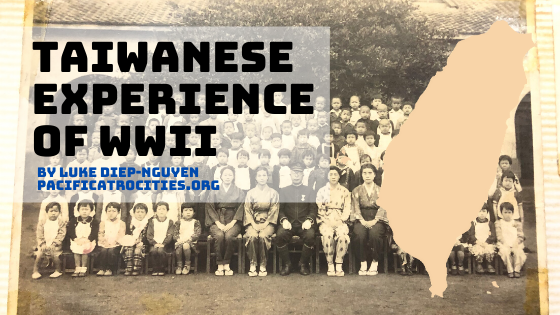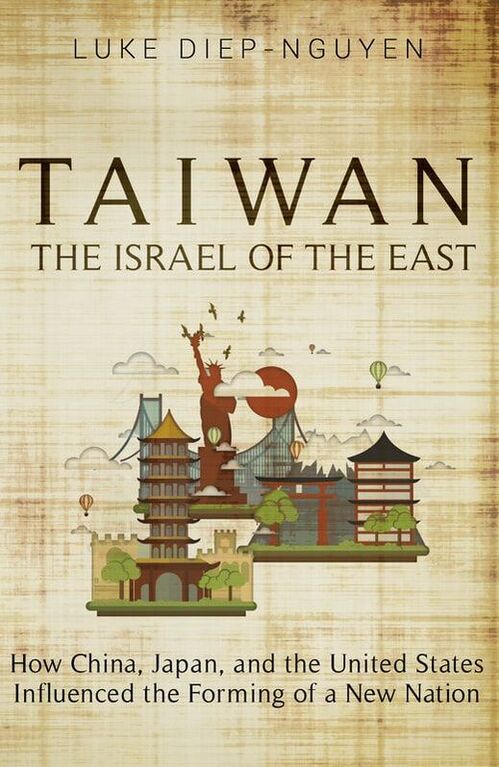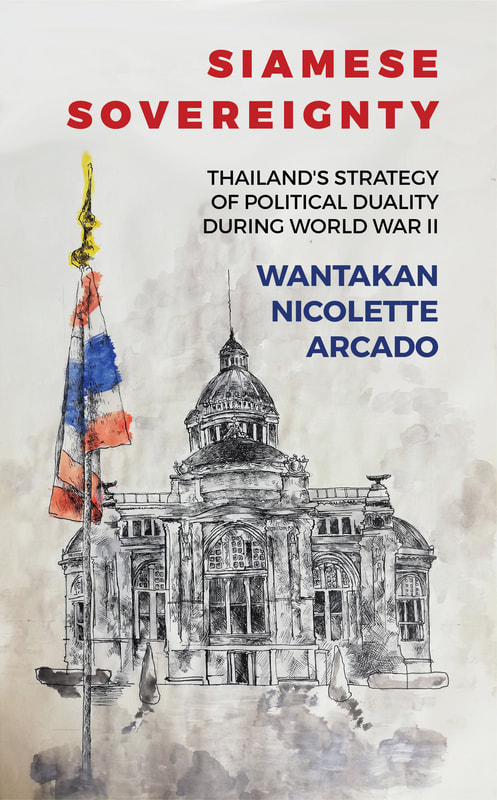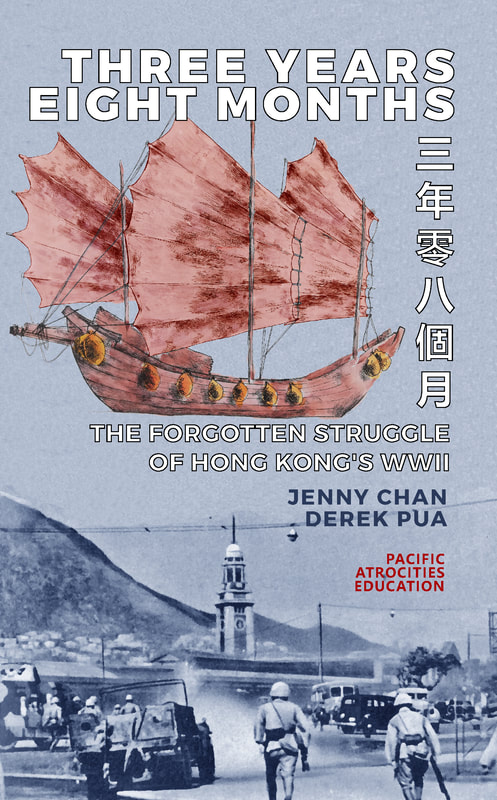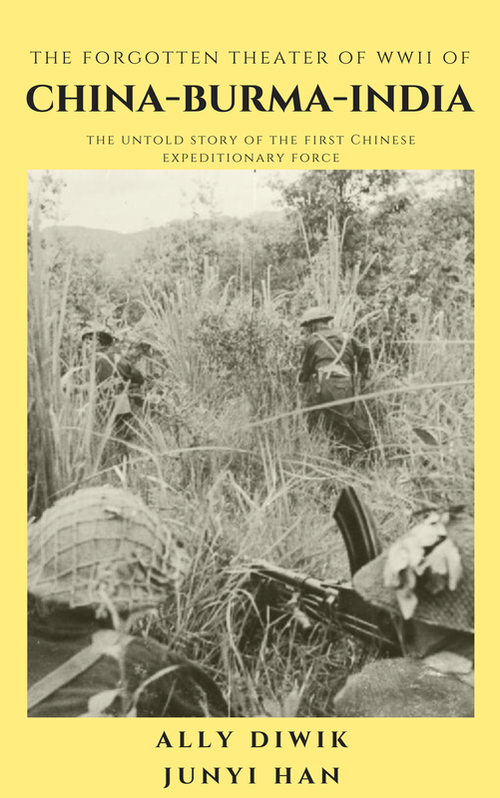|
by Luke Diep-Nguyen Taiwanese had faced the Second World War from many different angles, as Taiwan had been under Japanese occupation for around four decades when the Second Sino-Japanese War was starting up, which influenced the Taiwanese to be more supportive of Japanese cause. (continued) Another angle represented were Taiwanese who supported the Chinese as many Taiwanese were living in China at the time after escaping the Japanese invasion and displayed heavy anti-Japanese sentiments. By taking articles discussing Taiwanese experience in China and Japan during the war, as well as, adding a personal story of a Taiwanese who lived in Taiwan under Japanese occupation during this time, the book, Taiwan: Israel of the East explores the effects and changes that the war had on the Taiwanese, socially and politically. In China, the Taiwanese community and political organizations sought to unite under a more centralized front, known as the Alliance of Taiwanese Revolutionary Organization to help the Chinese combat the Japanese, as well as to influence the Nationalist Government on how to assist Taiwan and correctly govern the nation once the Chinese liberate it from Japanese control. The Alliance was not only a political movement, but also a military and intelligence movement. Each organization had its own espionage and guerilla tactics against the Japanese, as well as involvement in spreading propaganda to support their cause. The organizations were the Taiwanese Revolutionary League, Taiwan Volunteers, and Taiwan Party Headquarters. The Taiwanese Revolutionary League was the Taiwanese association that focused on collecting information, guerilla actions, propaganda, and political activities. The League was valuable in gathering information because many of their members could speak, read, and write in Japanese. While its guerilla tactics were limited, the League focused on education and propaganda for the Taiwanese community in China, as well as from Taiwan, to encourage their support. The League also tried to convince the Taiwanese community and foreigners that Taiwan was legally a province of China. The most important task for the League was to work with the Nationalist Government on actions to take for the war effort as well as educate officials on ruling Taiwan and to treat Taiwanese as Chinese as opposed to Japanese subjects. The Taiwan Volunteers was the primary and fundamental military part of the Taiwanese political and military service in China. They recruited younger men to train as a part of a militia group. The members underwent strenuous military training and formed military units, which became part of the Nationalist’s Children Corps. The Taiwanese Volunteers also had a political part that focused on learning and understanding Japanese for gathering intelligence and spreading propaganda to not only Taiwanese but Japanese as well to discourage them from fighting. Lastly, the Taiwanese Volunteers consisted of a medical group which not only treated the wounded in battle but also sickness, particularly diseases such as cholera. The Taiwanese Volunteers opened multiple military and medical hospitals that assisted both Taiwanese and Chinese patients. The largest and leading Taiwanese political-military organization in China was the Taiwanese Party Headquarters. Of the three main Taiwanese organization, the Taiwanese Party Headquarters was the most effective, politically and militarily, as they were able to recruit the most members and take part in most of the Taiwanese military actions during the war. The Party was able to recruit Taiwanese within the Japanese military to act as spies or double agents, which enabled them to gain much of their military information from the Japanese. They also recruited Taiwanese who were issued to volunteer into the Japanese military to gather military intelligence. Politically, the Party Headquarters worked heavily with the Nationalist Government and even got one of their members to become a delegate in the Nationalist Government. Their main political goal was to assist the Nationalist Government with handling postwar Taiwan and how to best assimilate and integrate Taiwan into China. In Taiwan, after half a century under Japanese occupation, the Taiwanese culture and values were influenced and swayed under Japanese education. One example of Japanese educational influence on the Taiwanese was Kay Hickman (née Chen). Kay lived on the main Penghu island during the Japanese occupation. During WWII, Kay was in the first grade and was taught by Japanese teachers. While, within her family, Kay learned and spoke Taiwanese and Mandarin. In school, she was taught Japanese and spoke Taiwanese and Japanese. The Japanese had such an influence on her family that her brothers and father not only joined different branches of the Japanese military, but one of her brothers felt more Japanese than Chinese, and he discriminated against Chinese, calling them “Chungoro” or “China man.” They also changed their name to a Japanese one, Undo. Kay’s Japanese full name was Undo Keko. When the Chinese claimed Taiwan, Kay and her family had to change their last name again to a Chinese one, Chen. The hatred towards Chinese and Americans from the Taiwanese did not only stem from their education but also the constant aerial attacks that the Taiwanese received from American bombers to cripple Japanese industrial production. Kay was living on the Penghu Islands during the war, and her town, the largest city, Magong, was frequently bombed by American bombers. The fear that the bomb had caused her and her family were very common among many Taiwanese under American bombs, and it led to hatred for Americans for their devastating experience. Taiwan - The Israel of the East will consist of Kay, her family, and Taiwanese experience during World War II, both in Taiwan and China. Related Books
0 Comments
Leave a Reply. |
- Home
- Stories
-
Internship
- Summer 2024 Internship
- Summer 2023 Internship
- Fall 2022 Internship
- Summer 2022 Internship
- Summer 2021 Internship
- Fall 2020- Spring 2021 Internship
- Summer 2020 Internship
- Fall 2019 Internship
- Summer 2019 Internship >
- School Year 2018-2019 Internship
- Summer 2018 Internship >
- Fall 2017 Internship
- Summer 2017 Internship >
- Books
- Archives
-
Resource Page
-
Supplementary Research Guides
>
- Unit 731 - Guide >
-
Philippines' Resistance - Guide
>
- Philippines World War II Timeline
- The Japanese Invasion & Conquest of the Philippines
- Bataan Death March
- Formation of Underground Philippines Resistance
- Supplies of the Guerrilla Fighters
- The Hukbalahap
- Hunter's ROTC
- Marking's Guerrillas
- United States Army Forces in the Philippines of Northern Luzon (USAFIP-NL)
- The Aetas
- Chinese and Filipino-Chinese Nationalist Guerrilla Units
- The Female Faces of the Philippine Guerrillas
- Rising Sun Flag - Guide >
- Pinay Guerrilleras - Guide >
- Fall of Singapore - Guide >
- Three Years and Eight Months - Guide >
- Siamese Sovereignty - Guide >
- The Khabarovsk War Crimes Trial - Guide >
- Unit 731 Cover-up : The Operation Paperclip of the East - Guide >
- Marutas of Unit 731 - Guide >
- Prince Konoe Memoir - Guide >
- Competing Empires in Burma - Guide >
- Battle of Shanghai - Guide >
- Ishi Shiro - Guide >
- Taiwan The Israel of the East - Guide >
- Seeking Justice for Biological Warfare Victims of Unit 731 - Guide >
- Rice and Revolution - Guide >
- Clash of Empires - Guide >
-
Hunger for Power and Self-SufficiencyI - Guide
>
- The Influence of War Rations on Post-War Culinary Transformations
- How World War II Complicated Food Scarcity and Invention
- American Military Innovations
- Government-Sponsored Food Inventions in Europe during World War II
- Feeding the Army: The Adaptation of Japanese Military Cuisine and Its Impact on the Philippines
- Mixed Dishes: Culinary Innovations Driven by Necessity and Food Scarcity
-
Denial A Quick Look of History of Comfort Women and Present Days’ Complication - Guide
>
- The Comfort Women System and the Fight for Recognition
- The Role of Activism and International Pressure
- The Controversy over Japanese History Textbooks
- The Sonyŏsang Statue and the Symbolism of Public Memorials
- Activism and Support from Japanese Citizens
- The Future of Comfort Women Memorials and Education
- Echoes of Empire: The Power of Japanese Propaganda - Guide >
- Lesson Plans >
-
Supplementary Research Guides
>
|
Pacific Atrocities Education
730 Commercial Street San Francisco, CA 94108 415-988-9889 |
Copyright © 2021 Pacific Atrocities Education.
We are a registered 501 (c)(3) charity. |
- Home
- Stories
-
Internship
- Summer 2024 Internship
- Summer 2023 Internship
- Fall 2022 Internship
- Summer 2022 Internship
- Summer 2021 Internship
- Fall 2020- Spring 2021 Internship
- Summer 2020 Internship
- Fall 2019 Internship
- Summer 2019 Internship >
- School Year 2018-2019 Internship
- Summer 2018 Internship >
- Fall 2017 Internship
- Summer 2017 Internship >
- Books
- Archives
-
Resource Page
-
Supplementary Research Guides
>
- Unit 731 - Guide >
-
Philippines' Resistance - Guide
>
- Philippines World War II Timeline
- The Japanese Invasion & Conquest of the Philippines
- Bataan Death March
- Formation of Underground Philippines Resistance
- Supplies of the Guerrilla Fighters
- The Hukbalahap
- Hunter's ROTC
- Marking's Guerrillas
- United States Army Forces in the Philippines of Northern Luzon (USAFIP-NL)
- The Aetas
- Chinese and Filipino-Chinese Nationalist Guerrilla Units
- The Female Faces of the Philippine Guerrillas
- Rising Sun Flag - Guide >
- Pinay Guerrilleras - Guide >
- Fall of Singapore - Guide >
- Three Years and Eight Months - Guide >
- Siamese Sovereignty - Guide >
- The Khabarovsk War Crimes Trial - Guide >
- Unit 731 Cover-up : The Operation Paperclip of the East - Guide >
- Marutas of Unit 731 - Guide >
- Prince Konoe Memoir - Guide >
- Competing Empires in Burma - Guide >
- Battle of Shanghai - Guide >
- Ishi Shiro - Guide >
- Taiwan The Israel of the East - Guide >
- Seeking Justice for Biological Warfare Victims of Unit 731 - Guide >
- Rice and Revolution - Guide >
- Clash of Empires - Guide >
-
Hunger for Power and Self-SufficiencyI - Guide
>
- The Influence of War Rations on Post-War Culinary Transformations
- How World War II Complicated Food Scarcity and Invention
- American Military Innovations
- Government-Sponsored Food Inventions in Europe during World War II
- Feeding the Army: The Adaptation of Japanese Military Cuisine and Its Impact on the Philippines
- Mixed Dishes: Culinary Innovations Driven by Necessity and Food Scarcity
-
Denial A Quick Look of History of Comfort Women and Present Days’ Complication - Guide
>
- The Comfort Women System and the Fight for Recognition
- The Role of Activism and International Pressure
- The Controversy over Japanese History Textbooks
- The Sonyŏsang Statue and the Symbolism of Public Memorials
- Activism and Support from Japanese Citizens
- The Future of Comfort Women Memorials and Education
- Echoes of Empire: The Power of Japanese Propaganda - Guide >
- Lesson Plans >
-
Supplementary Research Guides
>
